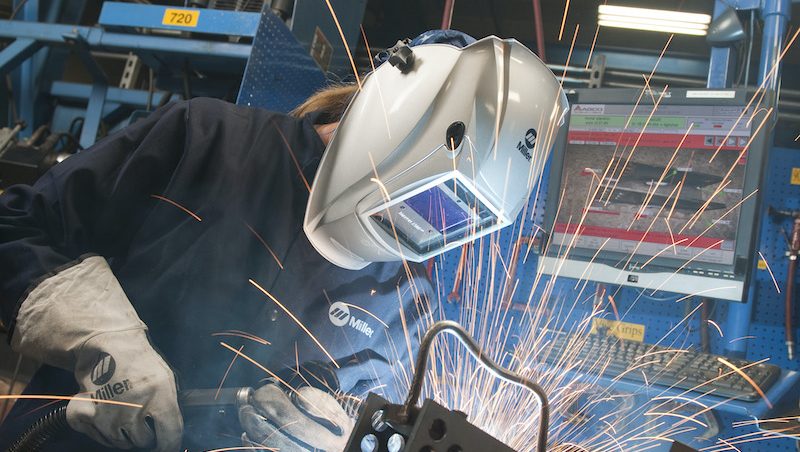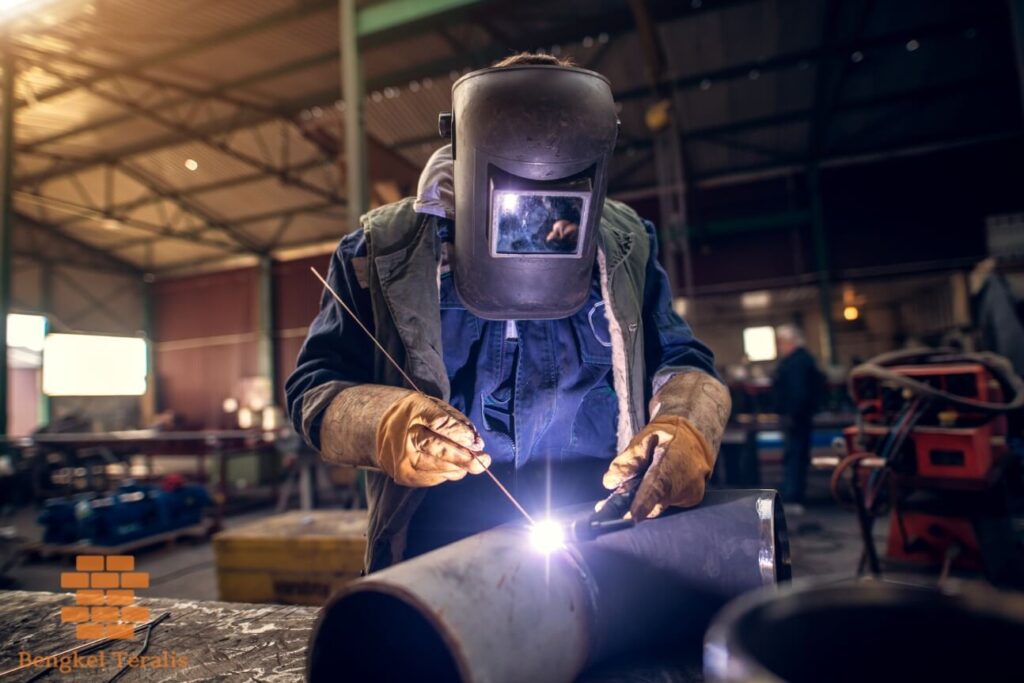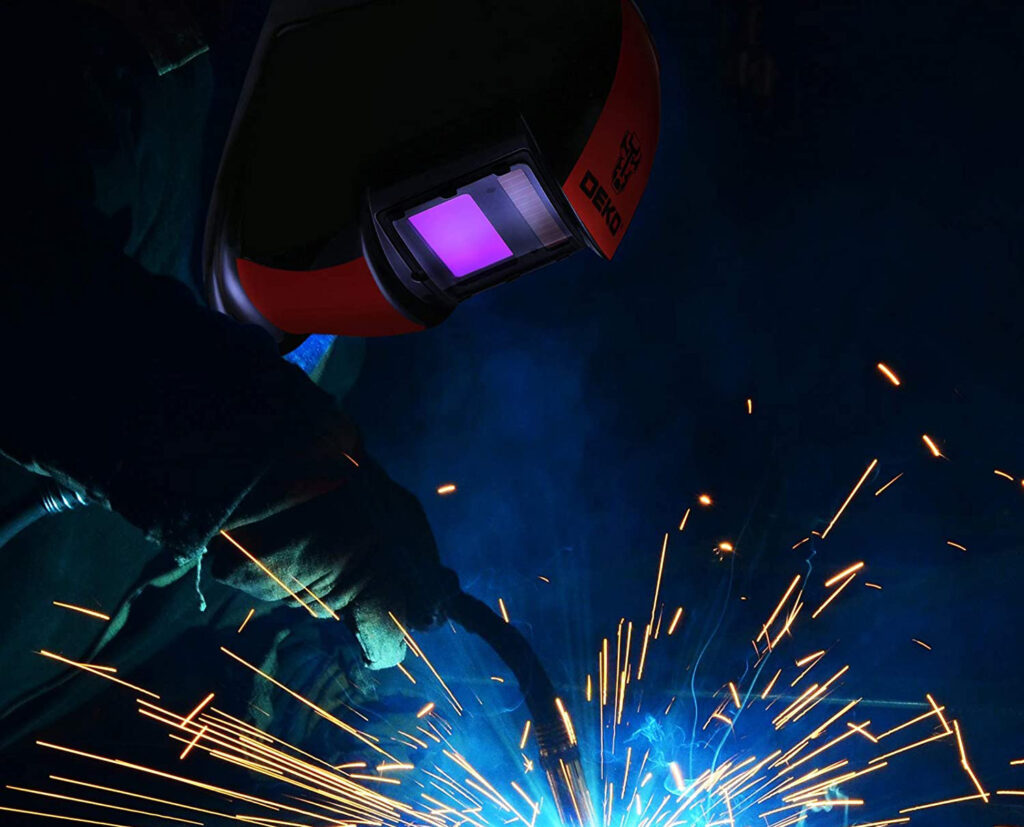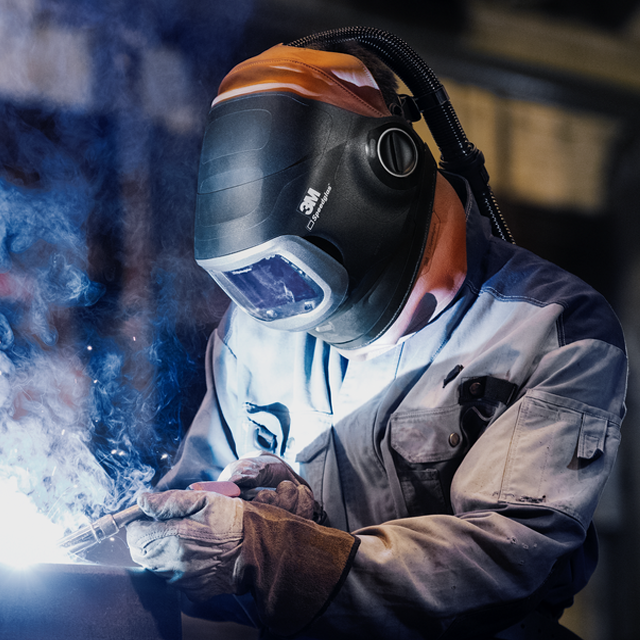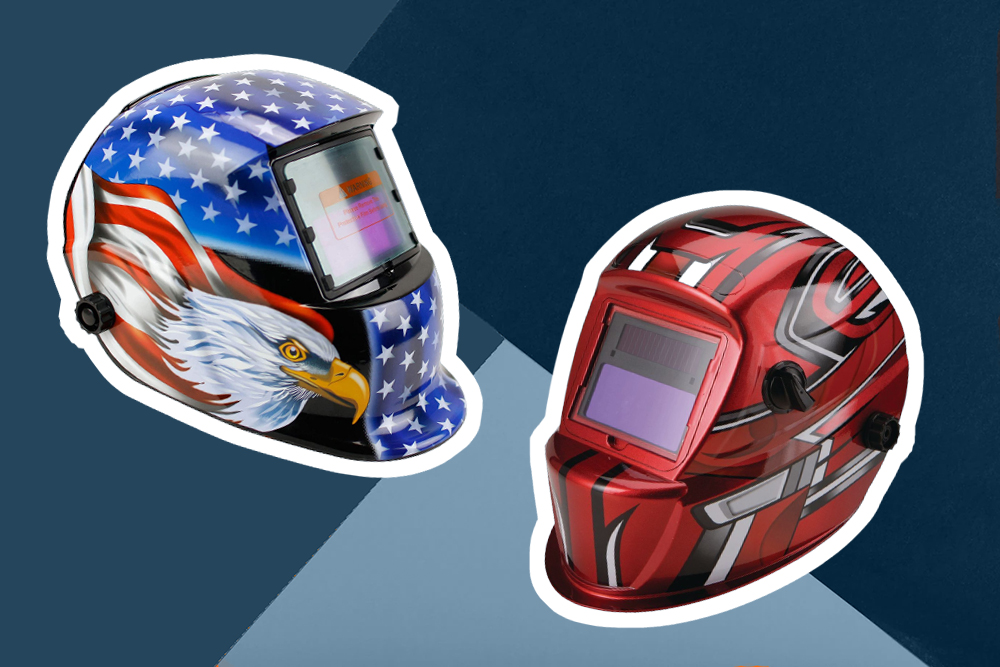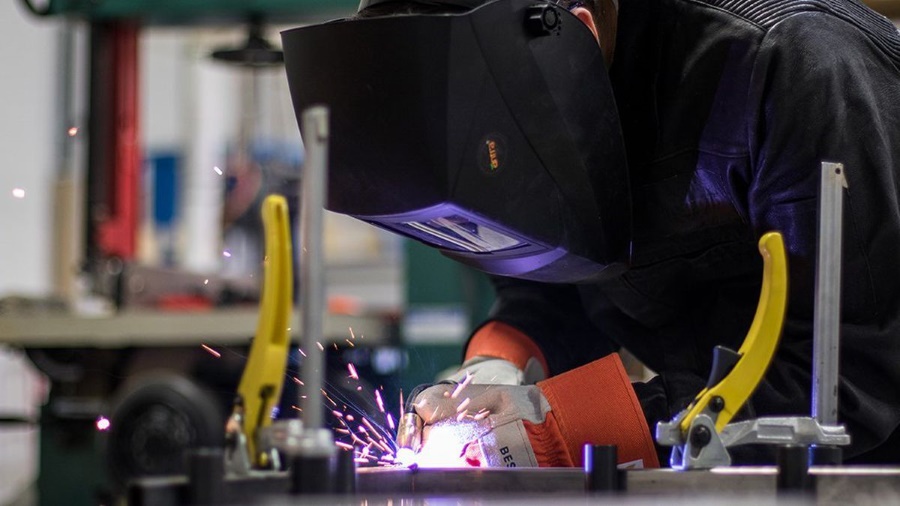

Welding goggles and helmets are essential safety gear that protect the welder against intense light, and wild spatter during welding. Technically, the welding vs. helmet debacle makes no sense because the two are incomparable, and they are meant to serve different purposes and are both vital for the welder’s safety. Without the welding helmet and goggles, you might suffer from welder’s eye, also known as arc eye, which is a painful medical condition caused by a swollen cornea.
Goggles are lightweight and less cumbersome, but they only offer protection for the eyes. Helmets offer full protection for both the eyes and the face, but they are more cumbersome. This article highlights all the advantages and shortcomings of either option so you can make an easy, informed choice.
Helmets are the ultimate welding protective gear for protecting the face and the neck during welding. With a helmet, your eyes and skin would be safe. Earlier, helmets were infamous for having visibility problems as users couldn’t see through the lens clearly. Present-day helmets are designed to allow you to change the lens to a shade that offers maximum protection without hindering visibility according to the type of welding you are doing.
What’s more, most modern welding helmets have a new LCD technology with auto-darkening properties. They can darken to a shade that will offer you the best protection automatically. This is such a huge deal compared to the older models that required one to flip the permanently-darkened glass manually.
Welding helmets also offer full protection against the UV rays that originate from the welding arc, and UV light cannot penetrate the welding helmet’s shell and lens.
The only downside of welding helmets is they are bulky, heavy, and cumbersome.
There are 6 main types of welding helmets;
Passive welding helmets- this is the most basic of all welding helmets. It is well-built with high-quality materials and is therefore very effective, but it doesn’t have any fancy features. It will protect you from UV rays, flying objects, and extreme heat emitted from welding.
The best thing about a passive welding helmet is that it is incredibly affordable, and this makes it a perfect option for beginners or any welder on a tight budget.
Auto-darkening welding helmet- this is the most convenient helmet. Unlike the passive helmet that requires you to adjust the lens manually, the auto-darkening helmet comes with an automated lens. During welding, it detects the light that is emitted and adjusts the lens accordingly for maximum protection. Although they are highly effective and convenient, auto-darkening helmets are not cheap.
Solar-powered helmets- auto-darkening helmets need power to operate. Some come with a fixed battery that can’t be replaced but can be recharged by solar energy. It is very economical, and it switches off the lens automatically when in use. Most welders have reservations about using solar-powered helmets because they are not very ready to use. You have to place them in the sun to recharge a day before a project.
Battery-powered helmets- if a welder finds it difficult to adjust lenses manually, you can imagine how difficult it is for them to check that their helmet is charged in the sun for the next day’s use. Replacing batteries is much easier for any welder.
Fixed-shade lens welding helmet- these types of helmets come with a conventional shade level of 10. They don’t adjust to various arc brightness, thus are ideal for working on just one type of welding project.
Variable-shade lens helmet- unlike the fixed-shade helmet, this one has a feature that allows its lens to adapt to various sorts of lights and brightness emitted by the arc during welding. Fixed-shade lends helmets and variable-shade lens helmets provide equally great protection but the latter increases the welder’s visibility tenfold.
The YESWELDER welding helmet remains of the popular option among welders when using either a Stick, TIG, MIG or MMA welder. It has a super-large viewing size for a helmet and it offer better clarity with true color view.
Welding goggles are pretty similar to glasses except they are thicker and tougher. They feature filters that temper the glare without limiting your vision and are specially designed to prevent harmful welding elements from reaching your cornea during welding. Industry professionals Trusted Source Shades Shades in the form of goggles, hand-held shields, or helmets are necessary when you are welding, brazing, or torch-cutting, or when such work is being performed near you. www.chem.purdue.edu maintain that you should never weld with your naked eyes because they can’t withstand the intense light. Even if you could withstand the welding light, you still need to protect your eyes from the unseen optical radiation.
If you don’t protect your eyes when welding, you risk developing photokeratitis, which is a painful medical condition that takes up to 48 hours to clear up. The worst that could happen is going blind.
If other protective equipment like a helmet weighs you down during welding, then welding goggles are the bare minimum you can’t go without. Do note that if you only wear welding goggles to arc welding, you’ll still be exposing the skin on your face and neck to harmful UV radiation from the intense light.
There are different types of welding glasses based on the lens shade numbers. The shade numbers indicate the darkness of the lens, and there is a wide variety of shades recommended for types of welding. Higher shade numbers are for welding process that produce a brighter arc.
Shade 3- this is used for torch brazing and soldering.
Shade 8-12- these are used for stick welding, GMAW/MIG welding, and GTAW/TIG welding according to the amperage used.
Shade 14- these are used for carbon arc welding.
Here
Trusted Source
Eye Protection against Radiant Energy during Electromagnetic energy given off by an arc or flame
can injure workers’ eyes and is commonly referred
to as radiant energy or light radiation.Welding and Cutting in Shipyard Employment
Electromagnetic energy given off by an arc or flame can injure workers’ eyes and is commonly referred
to as radiant energy or light radiation.
www.osha.gov
is more detailed information about the different shades of welding goggles from the Occupational Safety and Health Administration (OSHA).
If you are on the market for welding goggles and have no idea what to go for, check out the YESWELDER true color auto darkening welding goggles. It is perfect for TIG, MIG, and MMA welding and it offers a true-color view with great clarity.
As mentioned before, welding goggles and welding helmets are not the same as much as their main purpose is safety and protection. Here is a quick comparison that shows the differences between the two protective gears;
Welding goggles offer a wider field of view and a clearer visibility of the welding arc if you choose the correct shade level for the type of welding you are doing. Darker shades offer less visibility compared to lighter shades.
Although the present-day helmets are advanced with auto-darkening properties, they don’t offer great field of view and visibility like welding goggles. There are premium quality helmets in the professional range that have excellent view screen sizes but hey have a steep price point.
Welding goggles only protect your eyes from harmful radiation but not your face and other parts of your skin exposed. Besides radiation, they will leave the rest of your face and neck exposed to welding sparks and flying debris.
Helmets, on the other hand, have auto-darkening features that provide optimal protection against the harmful welding flush and the shell which protects against weld spatter, molten debris, and sparks flying around during welding. Overall, helmets offer better protection.
Most welders prefer welding goggles to helmets when it comes to convenience. They are much lighter and less bulky. Helmets offer the best protection but they are not comfortable. If you plan to weld for extended periods, helmets may give you fatigue.
You can get a welding helmet for nearly all types of welding because they have an auto-darkening LCD technology that adjusts itself for different arc brightness. As for welding goggles, you have to get a specific shade number for different types of welding. For maximum protection, you can’t use the same shade number for carbon arc welding for MIG or TIG welding.
Welding helmets are a bit pricier than welding goggles. You can get a welding helmet for as low as 15 dollars or as high as 100 dollars based on the brand and its design. You can get welding goggles for as low as 0.8 dollars depending on the brand and the shade.
Our welding goggles vs. helmets showdown clearly depicts the differences and shortcomings of each protective gear. If you want the best all-around protection, then you better get a welding helmet as it not only protects the eyes, but also the skin on your face and neck from harmful welding emissions. If you want a large field of view, go for welding goggles and if budget is your main concern, goggles are your best bet as well.
If you choose goggles, remember you have to get certain shades for different welding types. Welding helmets are designed to adjust to different welding arcs automatically. Regardless of the gear you choose, never use any type of welder with naked eyes. Also, exposing your skin can have long-term implications like cancer.
